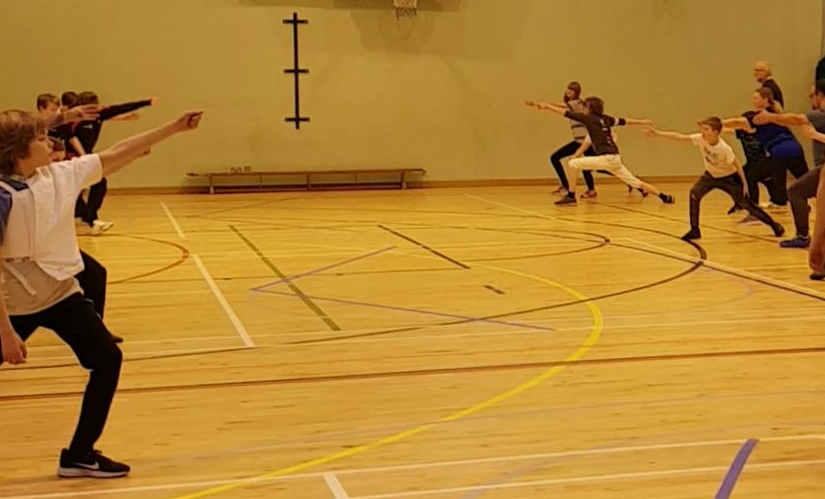As fencing coaches (and fencers) we all learn fencing footwork from the very first session. Being able to move efficiently is a fundamental part of fencing. Up until recently I’ve taught fencing footwork in a standard way step – forward, step back, lunge, recover etc etc.
However, recently whilst working on my coach education I headed up to Salle Ossian where I was introduced to the concept of Rhythmic Footwork. It uses vocal rhythm and words with a certain amount of syllables to teach footwork to beginners. It’s also useful for running ANY footwork session.
The concept is as follows. Instead of saying things like – “step forward”, “step back” or “lunge” we use the words with the relevant amount of syllables for the movements. We use common words that are related to food but you can use whatever works for you or interests the beginners. As an example we use “Tea” for a step forward as it has a single syllable. We use cof-fee for two steps back. As you will see in the video below changing the rhythm of the word allows you to change the rhythm of the footwork.
We found that when we started using this system not only did it make footwork sessions more fun and kept beginners entertained for longer, but it allowed us to quickly teach complex footwork patterns in a fun way. The system really accelerated the learning of the fencing footwork. In a 20 minute session we could take a beginner from a simple step forward to a “Vezzali shuffle” (Pep-si-co-la) or even a combined group of footwork such as a “step, balestra, lunge” (tea-cake-juice). The most complex is “The Korean Hop”. This has 3 syllables so we use (Ba-Na-Na).
Overall the benefits were as follows:
- Accelerated learning of complex footwork patterns.
- More entertaining than standard footwork teaching.
- Allows the coach to control and vary the rhythm of the footwork.
- Makes it easy to play games like Simon Says.
- Beginners remember the footwork names better as they are related to words they know.
- It is simple to combine words together – tea, cake, juice.
- It provides the opportunity for chunking, to be used as part of other movement patterns. (So tea, cake, juice may be shortened to “Triangle” for example).
- It gave the beginners and kids their own language that could be used to pass on the footwork easily.
I have implemented this at both West Lothian Fencing Club and at Heriot-Watt University and the results have been amazing.
Below is a video featuring Ben Schuessler giving examples of Rhythmic (Coca-Cola) footwork in practice. Thanks to Coach Phil Carson for the intro to this.
Feel freee to leave a comment and tell me what you think. Also, I have a Youtube channel with coaching content that is updated often. Please do subscribe if this sort of content interests you!
https://www.youtube.com/channel/UCyfC9gZWzY_Vaf9dXrXcJqg

We have been using numbers all the while.. 1 for forward, 2 backwards, 3 en marchant, 4 lunge, 5 advance lunge, 6 forward backward lunge (1, 2 & 4), etc
LikeLike